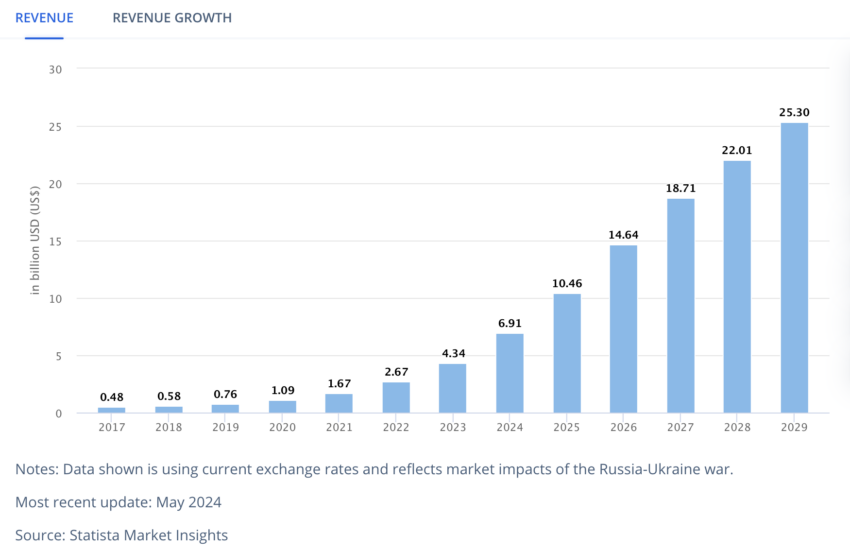Market
Discover How DePin Transforms Cloud Gaming

Video gaming is one of the favorite forms of entertainment for millennials, Gen-Zs, and Gen Alpha. However, graphic-intensive video games require high-end devices that are not accessible to everyone.
Cloud gaming emerges as a solution. Designed to transcend traditional hardware boundaries, it offers a glimpse into a future of gaming, unshackled by physical limitations.
How DePin Solves the Challenges of Cloud Gaming
The allure of cloud gaming lies in its promise to deliver high-quality gaming experiences without expensive consoles or PCs. Users can stream games directly from remote servers, enabling play from any device, anywhere.
Moreover, Statista forecasts that the cloud gaming market will surge at a CAGR of 29.64% in the next five years. Consequently, its revenue is predicted to hit $25.30 billion by 2030.
Read more: 7 Best Cloud Gaming Services in 2024

Despite its advantages, internet service quality and the physical distance from centralized data centers significantly impact the cloud gaming model. This often results in lag and interrupted gameplay.
“Cloud gaming faces significant infrastructure challenges compared to using a dedicated console/ device, including dependence on stable internet, high latency, internet traffic congestion, and data caps. These issues limit cloud gaming’s usability and innovation,” Web3 Researcher Eli5DeFi explained.
According to Eli5DeFi, DePin (Decentralized Physical Infrastructure Network) introduces solutions that are set to redefine cloud gaming through edge computing technologies.
Edge computing emerges as a pivotal technology in this scenario. By processing data closer to the user, it drastically reduces latency. Furthermore, it enhances the responsiveness of cloud gaming platforms.
The DePin architecture leverages a distributed network of edge computing devices. These devices offer local data handling, real-time analysis, and low-latency operations, which are essential for seamless gaming experiences.
Eli5DeFi shared an example of Aethir’s “Aethir Edge,” an enterprise-grade edge artificial intelligence (AI) device. This device is a cornerstone of Aethir’s 3-Layer DePin Architecture and plays a critical role in the edge layer by bringing high-end, localized computation to life.
With Aethir Edge, games that once required substantial hardware can now run with console-quality graphics and minimal latency on mobile devices. Finally, it enhances gaming accessibility and engagement.
Read more: What Is DePIN (Decentralized Physical Infrastructure Networks)?
Beyond Aethir, other companies within the DePin ecosystem, like Flux, are also making significant strides. Flux collaborates with YOM, a decentralized pixel streaming infrastructure, to integrate their technologies for an optimized cloud gaming service.
YOM leverages DePin to provide high-performance, low-latency gaming experiences. Consequently, this offers a decentralized alternative to traditional gaming consoles. Indeed, their partnership with Flux enables the scaling of GPU resources essential for handling more graphically intensive games and ensuring peak performance across global regions.
Disclaimer
In adherence to the Trust Project guidelines, BeInCrypto is committed to unbiased, transparent reporting. This news article aims to provide accurate, timely information. However, readers are advised to verify facts independently and consult with a professional before making any decisions based on this content. Please note that our Terms and Conditions, Privacy Policy, and Disclaimers have been updated.